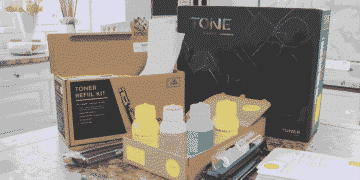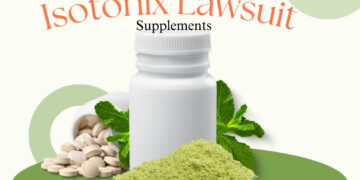Printing is an essential process for both companies and businesses. While companies focus on other areas of business to increase revenue and profit, they often overlook the cost of printing. Businesses often consider the use of refill toner kits as a strategy to reduce printing costs. While it is true that these kits offer some short-term benefits, they do also pose some risks when it comes to print quality, printer reliability, and overall operational efficiency. This guide captures the pros and cons of refill toner kits, the impact of compatible toner cartridges, and the optimal approach to eliminate the cost and performance gap.
What is a Toner Refill Kit?
A toner refill kit is a package that allows the user to refill an empty toner cartridge with toner powder. It comes with an empty toner cartridge, toner powder, gloves, a funnel, and instructions on how to refill. There is a cartridge holder cap and a dust cap on the cartridge. By reusing an old cartridge, you can save the cost associated with a new toner cartridge.
The benefits of using toner refill kits are easy to see: low cost, using less materials that end up in the landfill, and stretching the lifespan of cartridges. However, businesses must still keep in mind the other side of the issue. There are also concerns of haphazardly done refilling, inconsistent print quality, damage to printer parts, and leaks.
Using toner refill kits with compatible toner cartridges introduces yet another layer of complexity. Compatible cartridges are often cheaper and are produced by other companies that design these cartridges to fit specific printer types. These refill kits that go along with matched cartridges may be low-cost, but businesses must consider the quality of their output and the volume that they need to print.
Pros of Using Toner Refill Kits
Using toner refill kits may provide businesses with benefits, such as:
- Cost Savings: Cartridges that need to be refilled are much cheaper than cartridges that need to be purchased new, especially in an environment that prints in bulk.
- Environmental Benefits: Protecting the environment by lessening the more than 16 tons of plastic waste, saving cartridges from being thrown away, and supporting sustainable practices.
- Operational Flexibility: The ability to refill low-toner cartridges on-site helps businesses save time as they wait for shipment
- Bulk Savings: It’s cheaper for organizations with heavy printing needs to buy toner powder in large amounts.
The use of toner refill kits properly works to help maintain the productivity of a business while managing spending on printing expenses.
Cons and Risks of toner refill kits
Even though printing costs are cheaper, toner refill kits come with some risk that businesses should weigh and consider.
- Quality of Prints: Filled cartridges may vary in colors, have streaks, faded prints, or overall poorly done prints in comparison to purchased cartridges.
- Printer Damage: Filled cartridges that are badly done can result in toner spills, build up of toner, and even damage to internal machine parts, which can be more expensive.
- Yield: Filled cartridges tend to be less expensive than purchased cartridges but provide fewer prints, which can be detrimental in the long run.
- Warranty: Using refill kits or cartridges that are void of a brand may result in the business having to pay for repairs.
When quality presentations matter for B2B businesses, the numbers have to be considered along with these risks.
How Compatible toner cartridges fit in
Toner refill kits are used to help streamline the batching of toner under equipment. They are used with other non-branded cartridges to bulk up for cheaper deals.
The benefits of these toner cartridges are:
- Lower Cost: Providing cheaper alternatives than branded toners, these cartridges can help minimize operational spending.
- Availability: Traditionally easier to source in bulk and support continuous printing operations.
- Environmental Benefits: Frequently produced from recycled materials, advancing Corporate Social Responsibility (CSR) initiatives.
That said, the performance of compatible cartridges tends to vary. It is the responsibility of the businesses to make sure the cartridges being used have been tested for reliability, yield, and print quality. The use of compatible cartridges combined with refill kits can increase savings; however, the risk of inconsistent results due to the quality of the products tends to increase.
Read Also: When did Newport News Clothing go out of business
Best Practices for Using Toner Refill Kits in Business
B2B organizations that choose to use toner refill kits should follow best practices to maximize the benefits and mitigate the risks:
- Use High-Quality Compatible Cartridges: Compatible toner cartridges should be sourced from established suppliers and qualified to ensure a proper fit and dependable performance.
- Monitor Printer Performance: Spills, leaks, and printer damage most commonly happen when proper steps of the refill process, such as handling toner powder, are neglected.
- Monitor Print Quality: Documents should be routinely checked for output streaks, fading, and smudges to help with early problem identification.
- Paginate Cartridge Life: Set refill records to estimate yields and anticipate replacements, and keep records to ensure seamless operations when printing is running.
- Consider a Hybrid Approach: For high volume, internal printing, use refill kits. Reserve OEM or premium compatible cartridges for external-facing documents needing perfect quality.
By adopting these measures, firms will achieve a balance between the expenses accrued versus the reliable, professional printing performance needed.
One sentence, embodying key SEO phrases: There is a reduction in the printing cost while the professional quality output is maintained by using toner refill kits with a reliable partner providing compatible toner cartridges.
Conclusion
For a B2B business, the use of toner refill kits can be a paradox of cost-saving opportunities and the potential for quality concerns. Although they have operational costs and environmental benefits, they also shift the burden of quality control, printer damage, operational disruption, and other issues.
The use of compatible toner cartridges from reputable suppliers with the refill kits can achieve the maximum cost saving while the reliability is not compromised. This is true if the firms observe appropriate practices regarding refilling, monitoring, and maintenance. After thoroughly evaluating the trade-offs, the companies can adopt a printing strategy that also fulfills the budget constraints along with the professional standards. This also helps in providing unhindered operational flow.









































